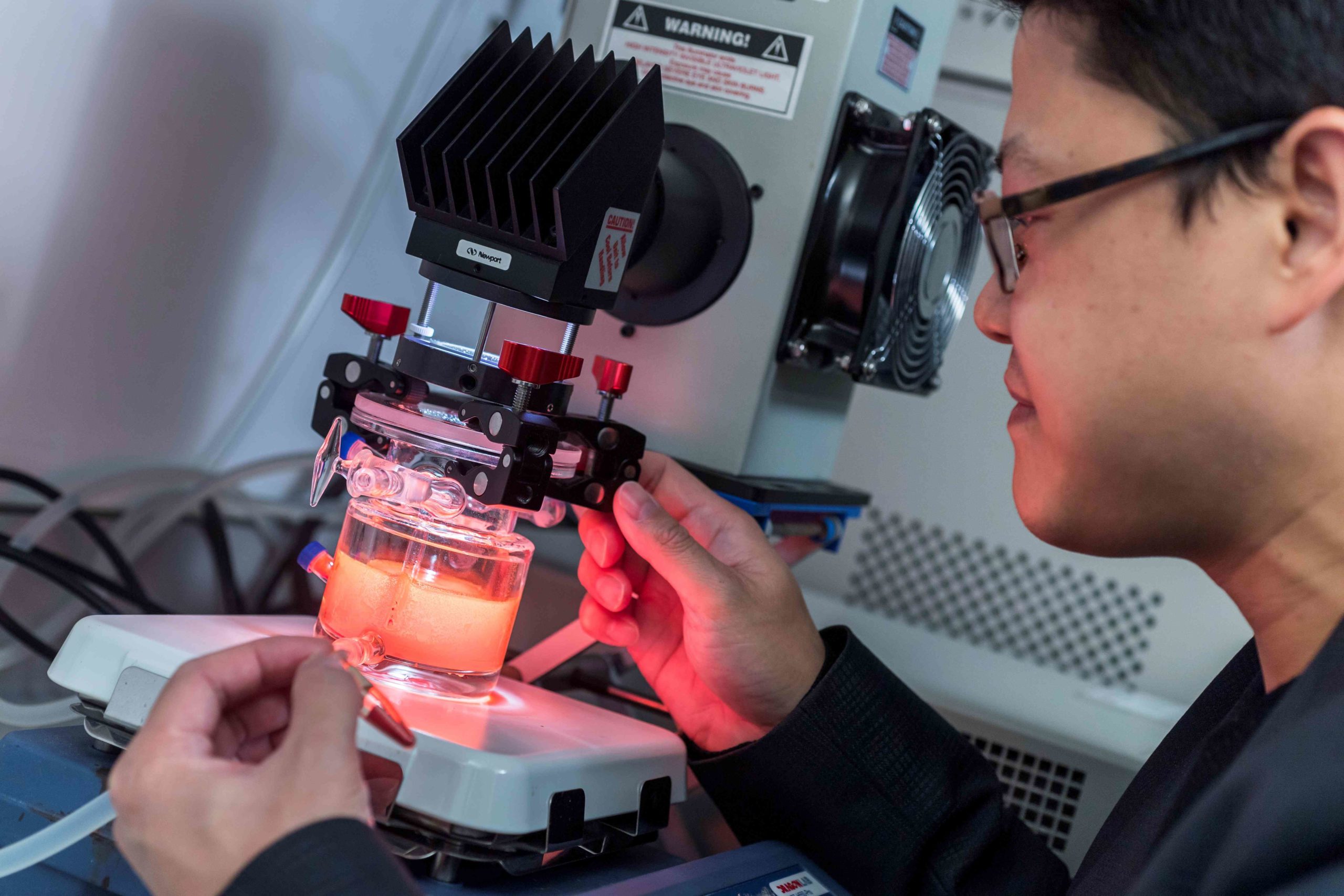A three-fold improvement in the efficiency of solar-to-hydrogen energy conversion can facilitate solar energy harvesting technology, according to environmental scientists at the
City University of Hong Kong (CityU).
This research outcome could make a contribution to tackling the global energy shortage and provide new insights into the development of solar-to-fuel materials for photocatalytic applications in the emerging field of hydrogen technology.
The research team led by Dr Sam Hsu Hsien-yi, Assistant Professor in the School of Energy and Environment (SEE) at CityU, has developed novel lead-free bismuth-based hybrid organic-inorganic perovskites (HOIPs) with a semiconductor heterojunction structure.
The heterojunction structure could serve as a driving force to enhance the charge carrier transportation which is beneficial for hydrogen production under visible-light irradiation without the addition of co-catalysts such as platinum or ruthenium.
The research is featured as the cover of the prestigious international journal Advanced Functional Materials under the title “In-situ formation of bismuth-based perovskite heterostructures for high-performance co-catalyst-free photocatalytic hydrogen evolution”.
“We would like to construct a lead-free HOIP material that can drive the photocatalytic hydrogen production without a noble-metal co-catalyst,” said Dr Hsu.
In the process of exploring and developing their application for the production of photocatalytic hydrogen, Dr Hsu’s team discovered a straightforward method for constructing a junction structure, which led to improved photocatalytic activity.
They employed time-resolved photoluminescence spectra (TRPL) to characterize the materials. From the TRPL result, the charge transfer of the HOIP material with heterostructure exhibited a longer lifetime than the material without the heterostructure. The longer lifetime indicates a reduction of nonradiative recombination in the heterostructure.
Therefore, the in-situ formation of the heterostructure benefits photocatalytic performance. The result shows improved efficiency by three-fold and a more stabilized solar-induced hydrogen evolution for the perovskite heterojunctions, even without the addition of any noble metal co-catalyst under visible light irradiation.
